The whole-genome landscape of Burkitt lymphoma subtypes
- PMID: 31558468
- PMCID: PMC6871305
- DOI: 10.1182/blood.2019001880
The whole-genome landscape of Burkitt lymphoma subtypes
Erratum in
-
Panea RI, Love CL, Shingleton JR, et al. The whole-genome landscape of Burkitt lymphoma subtypes. Blood. 2019;134(19):1598-1607.Blood. 2022 Feb 24;139(8):1256. doi: 10.1182/blood.2021015065. Blood. 2022. PMID: 35201326 Free PMC article. No abstract available.
-
Panea RI, Love CL, Shingleton JR, et al. The whole-genome landscape of Burkitt lymphoma subtypes. Blood. 2019;134(19):1598-1607.Blood. 2023 Sep 7;142(10):940. doi: 10.1182/blood.2023021419. Blood. 2023. PMID: 37676691 Free PMC article. No abstract available.
Abstract
Burkitt lymphoma (BL) is an aggressive, MYC-driven lymphoma comprising 3 distinct clinical subtypes: sporadic BLs that occur worldwide, endemic BLs that occur predominantly in sub-Saharan Africa, and immunodeficiency-associated BLs that occur primarily in the setting of HIV. In this study, we comprehensively delineated the genomic basis of BL through whole-genome sequencing (WGS) of 101 tumors representing all 3 subtypes of BL to identify 72 driver genes. These data were additionally informed by CRISPR screens in BL cell lines to functionally annotate the role of oncogenic drivers. Nearly every driver gene was found to have both coding and non-coding mutations, highlighting the importance of WGS for identifying driver events. Our data implicate coding and non-coding mutations in IGLL5, BACH2, SIN3A, and DNMT1. Epstein-Barr virus (EBV) infection was associated with higher mutation load, with type 1 EBV showing a higher mutational burden than type 2 EBV. Although sporadic and immunodeficiency-associated BLs had similar genetic profiles, endemic BLs manifested more frequent mutations in BCL7A and BCL6 and fewer genetic alterations in DNMT1, SNTB2, and CTCF. Silencing mutations in ID3 were a common feature of all 3 subtypes of BL. In vitro, mass spectrometry-based proteomics demonstrated that the ID3 protein binds primarily to TCF3 and TCF4. In vivo knockout of ID3 potentiated the effects of MYC, leading to rapid tumorigenesis and tumor phenotypes consistent with those observed in the human disease.
© 2019 by The American Society of Hematology.
Figures

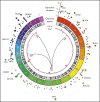
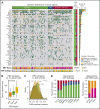
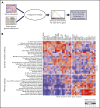
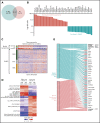
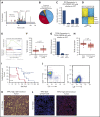
Comment in
-
Burkitt lymphoma genomic discovery studies, drivers, and validation.Blood. 2023 Sep 7;142(10):936-938. doi: 10.1182/blood.2022018865. Blood. 2023. PMID: 36302163 No abstract available.
-
Concerning data inconsistencies in Burkitt lymphoma genome study.Blood. 2023 Sep 7;142(10):933-936. doi: 10.1182/blood.2022016505. Blood. 2023. PMID: 36302254 Free PMC article. No abstract available.
References
-
- Richter J, Schlesner M, Hoffmann S, et al. ; ICGC MMML-Seq Project . Recurrent mutation of the ID3 gene in Burkitt lymphoma identified by integrated genome, exome and transcriptome sequencing. Nat Genet. 2012;44(12):1316-1320. - PubMed
MeSH terms
Grants and funding
LinkOut - more resources
Full Text Sources

